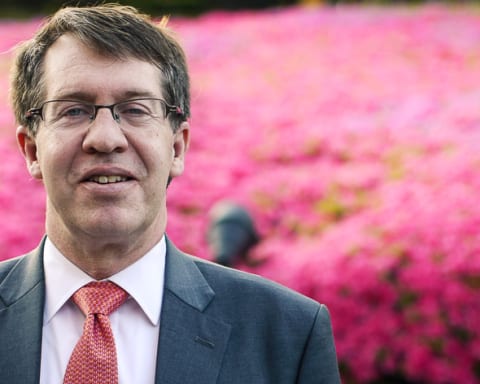


Can We Deploy THAAD Now?
South Korean defense officials let out a collective groan on May 9, 2015, as North Korea reportedly conducted a successful test-fire of a submarine-launched ballistic missile (SLBM). International news websites and security blogs were inundated with photos released by the Korean Central News Agency (KCNA) of a proud Kim Jong-Un personally overseeing the test launches. The dramatic photos also show the moment the SLBM exited the water. Bukgeuksung-1 (북극성-1), presumably the name of the missile, is seen painted on the side.
Though still in its nascent stages, if the reports are accurate, an operational SLBM is alarming for a number of reasons. First, it shows the speed of development of North Korea’s ballistic missile capabilities. Analysts were aware that North Korea was working on SLBMs, but not many suspected that flight tests would be conducted so soon. With each incremental step, North Korea’s missiles will become harder to track, detect, and intercept. Second, it shows that Pyongyang has no intentions of slowing down, let alone changing the course of its policy of belligerence and brinkmanship. Testing the SLBM violates at least four UN Security Council Resolutions (1718, 1874, 2087, and 2094). Lastly, North Korea is one step closer to a survivable nuclear deterrent. Because submarines are quiet, mobile, and difficult to detect, they are widely regarded as a very effective form of deterrence. Once the Kim regime successfully miniaturizes a nuclear device into a warhead, it will come to possess a credible second-strike capability.
The United States remains very concerned over the communist state’s ballistic missiles. Multiple high-ranking Pentagon officials have already publicly stated that Pyongyang’s capabilities are growing and must be addressed. With Washington-Pyongyang’s relations at a standstill and the Six Party Talks mothballed, the U.S. is attempting to deal with the missile problem strategically, most notably through its missile defense (MD) systems. Japan has been a willing and able partner in missile defense. Now, the United States is waiting for South Korea. With North Korea sitting at its proverbial doorstep, it seems MD integration would be the next obvious choice.
But not all players in the region are happy with the United States’ plan to implement a theater-wide defense system. The most contentious issue is the prospective deployment of the Terminal High Altitude Area Defense (THAAD) on the Korean peninsula. Due to THAAD’s powerful X-band radar system, the Army-Navy/Transportable Radar Surveillance (AN/TPY-2), which has an operational range of 1,500-2,000 km, it is caught in a political deadlock. Beijing finds THAAD to be unsettling because the radars, which will nominally be used to monitor North Korea, can just as easily be reconfigured to peer deeply into Chinese airspace. And so, Chinese leaders have been putting considerable pressure on Seoul not to agree to any deployments.
Unfortunately, China’s objections to THAAD are becoming less convincing as North Korea slowly develops its capabilities. With its limited and aging nuclear arsenal, China is indeed threatened by a comprehensive missile defense system. But North Korea’s successful test launch of an SLBM could be the credible threat that may justify the deployment of THAAD. As with all things coming from the reclusive Hermit Kingdom, it is all speculation and rumors. But should the reports prove true, and the North Koreans are on their way to fielding an operational SLBM, it is a cause for concern. Expect the United States to include this new development in the rhetoric for increased missile defense in the region.

Something’s Rotten in Silicon Valley
Silicon Valley has long been trumpeted as both the ideal and center of America’s entrepreneurial energies and business acumen. It has been an envious example for foreign governments, particularly in Asia, seeking to spur creativity and international success stories in their economy. Most recently, Japanese Prime Minister Shinzo Abe pledged to help small Japanese firms enter Silicon Valley in an attempt to help jumpstart the Japanese economy and promote its firms long term competitiveness. Beyond the economic capital Silicon Valley has generated among Americans, increasingly these firms are starting to command considerable domestic social and political capital. In the debate over net neutrality it was these tech firms that came out on the side of the “common man” that led to considerable positive coverage from bloggers on these companies. While Silicon Valley may be the shining exemplar of America’s best on the surface, lurking just below the warm shimmer is a growing rot that is going largely unnoticed.
As Mark Ames of Pando Daily first uncovered, from 2005, Apple’s Steve Jobs and Google’s Eric Schmidt illegally agreed not to recruit each other’s employees, share compensation details, and to publish workers who violated these terms. As discovered by Ames, the agreement grew in scope to cover the who’s who of Silicon Valley companies including Apple, Google, Intel, Adobe, Intuit, Dreamworks, Oracle, and Pixar. Through these actions, the companies involved were able to push down wages of their employees to the tune of USD $9 billion according to the class action lawsuit. In emails leaked to the public, prominent peoples champions such as Apple’s Steve Jobs, Google’s Sergey Brin and Eric Schmidt are revealed to have sent direct emails to each other of violations in the other’s company and demanding the firing of workers who dared to breach their agreement. Jobs in particular comes off as a true robber baron and is shown to threaten companies with “war,” reminding them to consider Apple’s size and power if they did not consent to joining the wage fixing cartel. The fallout from this discovery is only growing, and another class action lawsuit by visual effects workers is being brought on following these revelations. In addition, the number of companies and their level of involvement continues to grow as more personal emails are revealed. These revelations reveal the true nature of these companies as being far from the champions of meritocracy and encouraging individual talents that so many revere them for. Rather, the image that is revealed is more similar to the abuses of major financial companies in the run up to the 2008 Economic Crisis and even further back to the robber barons of the 19th century. As these documents reveal, those at the highest levels of these companies were not only aware of their illegal actions, as repeated emails encouraging planning for plausible deniability has shown, they were also aware of how their actions flew completely against the public image their massive PR funding built. As one Intel employee remarked “While we pay lip service to meritocracy, we really believe more in treating everyone the same within broad bands”.
Given that so many of Silicon Valley’s companies are concerned with the cost of their employees enough to illegally suppress their wages, it is unsurprising that exploitation of foreign workers has become linked to many of these tech companies. Silicon Valley marquee Apple, in addition to Google, Verizon, Cisco, and many more have participated in the H1-B visa sponsorship program that according to the US Congress has been abused on an “industry wide” scale. Highlighted in the non-profit Center for Investigative Reporting’s report is a thorough expose on the issue. Abuses of H1-B visa workers include being tied to their place of employment, legal liability for breaking their contracts, and creating an “ecosystem of fear” to ensure employees do not speak out on these violations. According to US Department of Labor investigations, and cited by the report, from 2000-2013 over USD $29.7 million was withheld from employees hired from overseas and through the labor brokers that supply them to companies that include Silicon Valley’s most publicly lauded companies. Not content with their current access to low wage workers and their success in colluding to depress wages, Google, Facebook, Apple, and other Silicon Valley tech giants are strongly lobbying the Obama Administration and members of Congress to increase the cap on H1-B visa grants and consequently to support labor brokers that engage in the well document exploitative practices. And why shouldn’t they? As has been covered before, these overseas hires are paid far less than the market rate for their services and are frequently returned to their home country after completing their contract instead of being hired on full time. Despite the hoopla and puff pieces such as this article from Slate coming out in support of expanding the program as a “means to bring the best and brightest to the US”, the numbers show that the majority of H1-B hires are not provided a path to citizenship and long-term employment. In short, these companies benefit from cheap, temporary and often exploitative labor and are using their political clout vis a vis their economic power to expand their power to do so.
If the illegal conspiring to depress domestic wages and to take advantage of foreign workers is not worrying enough, the political clout that these companies are starting to wield, and apparently effectively, is an even greater cause for concern. As I have covered previously, recent empirical research has shown that the economic elite, including those that are at the top of companies such as Apple, Google, and Facebook, have an overwhelming ability to dictate what political actions are followed in the US. Emphasizing this ability to influence the actions of politicians is Google, famous for their “Don’t be evil” motto. As reported by the Wall Street Journal, while being investigated for antitrust violations of which they would subsequently be cleared of, Google co-founder Larry Page and other top employees met with Obama Administration officials and the FTC. According to the report, Google lobbyists have met with officials at the White House on the average of once a week since Obama took office. This should come as little surprise however, as from the very onset of his presidency the number of former Google top brass or Google-affiliated individuals in the Obama administration has raised eyebrows. In addition, Google is already seeking to get close to Hillary Clinton’s campaign, with many suspecting that her chief technical office will come from Google. While other firms may not be as high-profile, Google has set the precedent for Silicon Valley’s influence in the highest levels of politics.
Far from being the hotbed of entrepreneurial spirit born of free market capitalism and paving the way for America’s technological and economic leadership throughout the next century, the top firms that now rule Silicon Valley are more accurately seen as exploitative actors profiting through monopoly capitalism. With levels of income inequality at record highs, firms that collude to depress wages are dangerous. When they begin to wield their economic power to secure political objectives in line with maximizing their profits, the very foundations of capitalism and the integrity of democracy are undermined. The alignment between these firms and net neutrality or any other political issue should not be misconstrued as their sympathy for the common man. Rather, as the rare instance when a monopolistic power’s aims happen to match those of the average citizen. Silicon Valley may be responsible for amazing technological feats and innovative products central to our lives, but the aims of its firms are no different than any others in a country such as the US where politics and money are so intertwined: maximize profit no matter the cost.
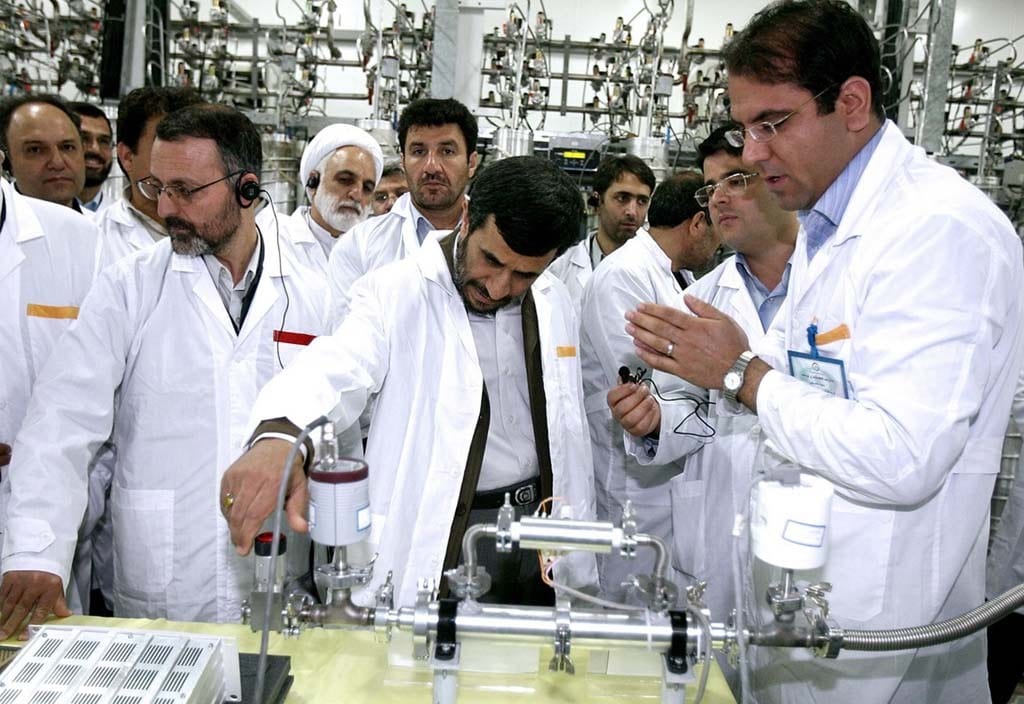
Iran: Why Nuclear Weapons Made Sense
The nuclear talks between Iran and the Six Powers have dominated headlines for the first week of April. After days of tense negotiations, a deadline extension, and flaring tempers, an agreed upon framework has finally emerged. And, unsurprisingly, there has been no shortage of critics. The more hawkish American and Israeli lawmakers voiced displeasure. Iranian hardliners found it inadequate. And both countries seem to be reporting different versions of the framework. And to top it all off, there still is no concrete deal in place. March 31st was only a soft deadline important to only the United States to placate the demands of its Congress. The negotiations are far from over and there’s plenty of work left to be done.
Everyone understands the dangers of nuclear proliferation. More pointedly, everyone understands the dangers of a nuclear Iran. Thus far, the dominating narrative of Iran’s quest for nuclear capabilities is that of an aspiring regional hegemon capitalizing on the instability caused by the Syrian conflict, American interventionism, and the Arab Spring. This conjures up images of a state hell-bent on destruction making a mad grab for power. This is seriously lacking. This narrative does negotiators and the American public no favors when thinking about Iran’s nuclear program. So if not domination, what drives Iran’s desire for the bomb?
A Dangerous Neighborhood
Iran’s geopolitical environment is incredibly unfriendly. This is a reality that is lost on most Americans. After pushing out European colonial powers out of the Western hemisphere throughout the 19th century, the United States has enjoyed great security. Being flanked by massive bodies of water to the east and the west and bordering relatively weaker and friendly states to the north and south, the United States exists in a secure environment that affords them the ability to operate and intervene in other parts of the world.
Iran, on the other hand, is not so fortunate. It shares its region with serious rivals like Saudi Arabia and Israel. Both have close working ties with the United States and, allegedly, Israel is already a nuclear power. And Iran shares a long border with Iraq, which has been a problem in the past. These state rivalries are exacerbated by the all too familiar ethnic and sectarian divide that characterize the region. Persian-Arab, Arab-Jew, and Sunni-Shia differences have brought Iran and its neighbors into various conflicts and proxy wars that are costly, messy, and divisive.
Furthermore, the aggressive presence of the United States in the Middle East and South Asia add to Iran’s insecurity. Oil remains an absolutely critical natural resource. With Iran being one of the world’s major oil exporters and occupying the Strait of Hormuz, it is no surprise why the United States continues to forcefully project its power onto this region. After the September 11 attacks, the United States has steadily increased and cemented its presence under the guise of stamping out terrorism and extremism. The general public and, more alarmingly, many lawmakers in the United States regard Iran as a backward nation led by fundamentalist theocrats who are irrational, dangerous, and destructive. In his State of the Union Address, George W. Bush labeled Iran, along with Iraq and North Korea, as the three legs of the Axis of Evil. So, when the United States illegally and unilaterally invaded Iraq in 2003, there must have been some sweaty palms in Tehran.
A Traumatic Past
In contrast to its self-imposed image of the champion of western liberal values, the United States, along with the United Kingdom, was directly responsible for halting the democratic process in Iran. With the overthrow of democratically elected Prime Minister Mohammad Mosaddegh in 1953 and the establishment of the Pahlavi Dynasty, the West sowed the seeds for the current, revolutionary theocratic Iran. The overthrow of Mohammad-Reza Shah Pahlavi in 1979 marked the beginning of the poisonous relationship that exists today between Iran and the United States.
However, probably no modern historical event plays a larger role in Iran’s drive for nuclear weapons more than the Iran-Iraq War of 1980 – 1988. Complete with chemical weapons, trench warfare, and casualties in the millions, it was very reminiscent of the horrors of World War I. The Iran-Iraq War has left a deep and scarring impression upon the Iranian psyche. One of the central features of this terrible conflict is Saddam Hussein’s liberal use of chemical weapons against Iranian troops. After succumbing to Iraq’s illegal and underhanded unconventional attacks, then-President Ali-Akbar Hashemi Rafsanjani bitterly remarked, “The war taught us that international laws are only scraps of paper.” The West turned its collective backs on Iran by directly aiding Iraq financially, politically, and militarily. To further add insult to injury, upon conclusion of the conflict, the blame was placed onto the lap of Iran. The war cost over a million lives, a million refugees, thousands of prisoners of war, and a total cost of over USD $300 billion, and left the economies of Iraq and Iran in tatters. And all Iran had to show after suffering those costs was one stinging lesson: trust no one.
Iran’s pursuit of nuclear weapons is due to its concerns about safeguarding its current and future security. Iran has decided to protect itself against all of these threats through the deterrent capabilities of nuclear weapons. However, rational motivations do not justify possession. Negotiations must succeed. Even if a nuclearized Iran is inevitable, at the very least, delaying the time it takes to get there would be better than nothing at all. This does not bode well for the nuclear proliferation regime as it potentially provides other nuclear hopefuls with a path to armament. Outside the traditional, and legal, five nuclear weapons states, North Korea, India, Pakistan, and allegedly, Israel have violated the Nonproliferation Treaty, and there have been no serious repercussions. And most still maintain normal relations with the United States, as well as the rest of the world. Ukraine, on the other hand, inherited around 5,000 nuclear weapons after the fall of the Soviet Union. Kiev voluntarily transferred and disassembled the armaments in Russia. And, assuredly, Iran has paid very close attention to what has transpired there.
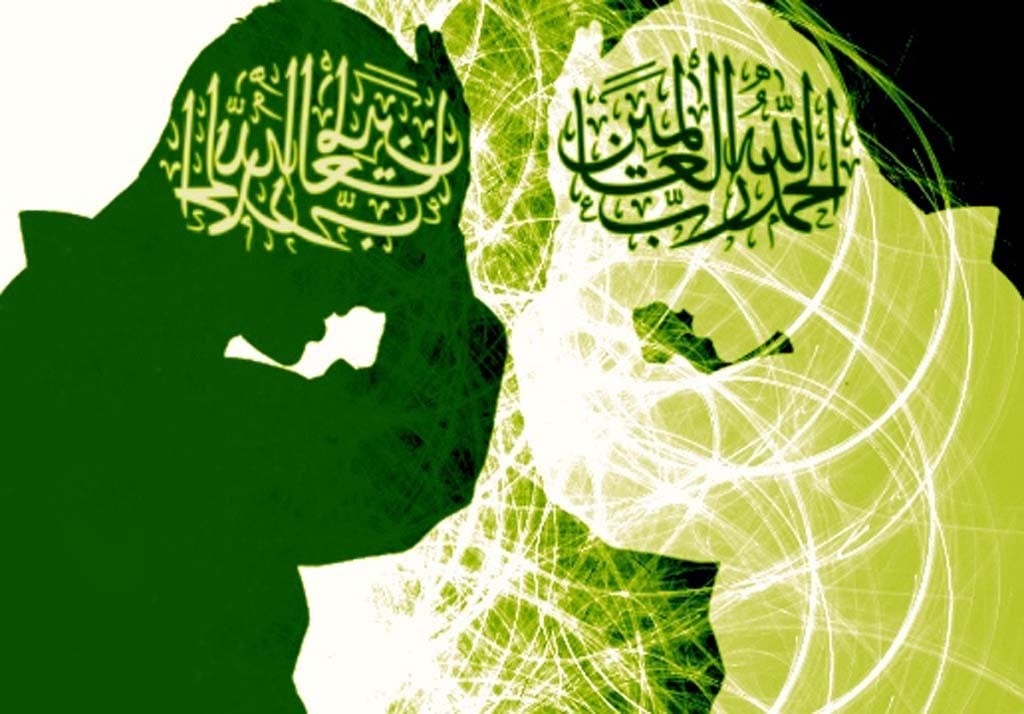
ISILationism, Part 2: the Sunni-Shiite Divide and Iran as America’s Contentious Ally
In case you missed it be sure to check out the first part of the series, ISILationism, Part 1.
Beholden to the promise of containing the Islamic State, a coalition force of regional powers, such as Jordan and Saudi Arabia, has been organized under the guidance of the United States. Some onboard this multilateral feat, however, are rather questionable allies who, through one fashion or another, hold responsibility for the formation of the Islamic State! Islamists throughout the world are joining ISIL’s ranks in the Levantine expanse of bloodshed and destruction, but these are Salafi Jihadist Sunni Muslims and not one of them would be Shiite, lest they prefer suicide without geopolitical impingement. This is where Iran comes into play as the most unlikely candidate America can depend on, teetering on the paradoxical fringe of reliability and suspicion equally reciprocated by the U.S. The Islamic Republic of Iran remains adamant that their nuclear program is a peaceful means for clean, renewable energy, despite resultantly enduring sanctions over and over again without much resolve. An interim deal was made through the greater powers of the international community but, as of yet, progress has been stifled and Iran continues its plans. Nonetheless, a turning point for Iranian-American relations has been the War on Terror, whereby Iran gathered actionable intelligence on Al Qaida and jointly fostered the Northern Alliance in Afghanistan to repel the Taliban from power. Another Iran-U.S. venture in 2003 was executed in Iraq through their respective Foreign Internal Defense training exercises and the collective buildup of a representative government. Once again, Iran and America have a vested interest in the preservation and prosperity of the Iraqi government, utilizing their own drones and fighter-jets to neutralize ISIL cells through airstrikes and deploying their own special operations forces to encourage the morale of the Iraqi military, bringing the fight to the Islamic State before the usurpation of Baghdad.
In analyzing the puzzling and chaotic nature of it all, we must first recall that much of the geopolitical demarcations and escalations of conflict in the Near East stem from the historical rift of the Sunni-Shiite divide, where even within this most salient division, the fractures grown from the split impart a complexity of ideologies foremost from the source. The epochal episodes of Sunni-on-Sunni violence and Shia-on-Shia violence lend credence to an additional sectarian obstructiveness inwardly bent and, oftentimes, domestically generated. However, on exclusively minding the Sunni-Shiite divide, Islam’s preeminent schism attests to the unrelenting pain and anguish that has marred the Muslim World for centuries, where even great political players in the international ring are still at severe odds with one another, such as Iran and Saudi Arabia. Iran is home to a significant Shiite majority and fosters an authoritarian regime rooted in Twelver Islam philosophy, while Saudi Arabia’s monarchical system lends itself to supreme authority to most of the Sunni Muslims inside and out of the Islamic homeland. Contrary to popular opinion, perhaps, Sunnis and Shias have lived just as peaceably with one another as they have lived disparately with one another, yet a newfound resurgence toward hostility between the two has launched headlong into the 21st Century. With 85% of the Islamic World following Sunni orthodoxy, the roughly 15% of Shia adherents have suffered outright victimhood since the beginning of the Sunni-Shiite divide long ago. Although the current predicaments faced by Shias is intimately rooted in the historicity of Islam, it would be pertinent to observe more modern accounts attributed to the socio-religious, inter-political rift occurring specifically in Syria and Iraq. One not need look too far, however, to notice the clerical supremacy of the Ayatollah in Iran and the royally approved Wahhabism promoted by Saudi Arabia.
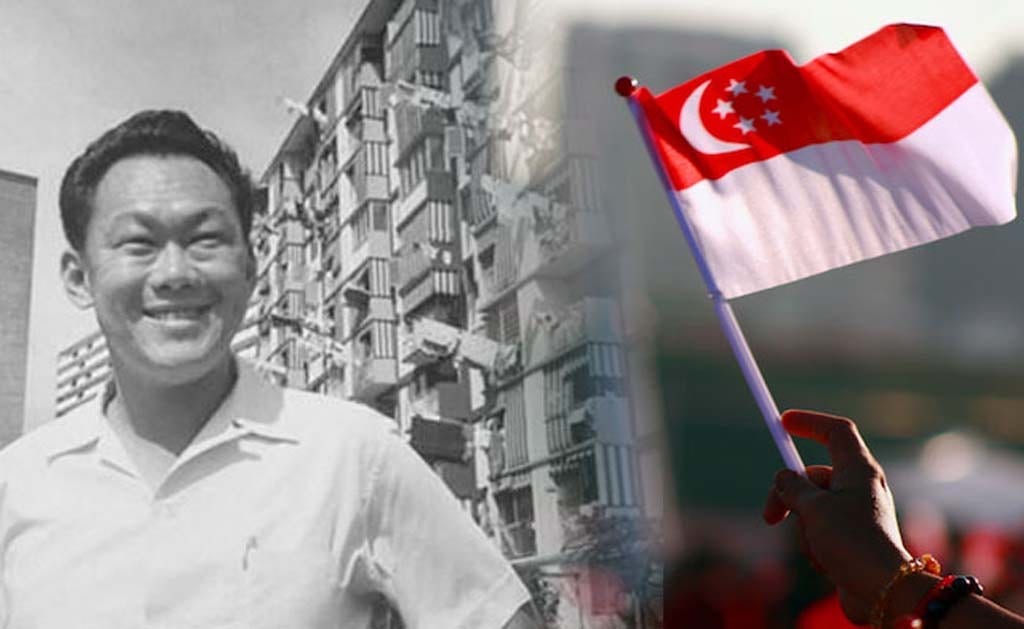
Lee Kuan Yew & The Curious Legacies of “Benevolent Dictators”
As has been widely reported in global media, the former prime minister of Singapore Lee Kuan Yew has passed away at the age of 91. Immediately following his passing, coverage of the conflicting nature of Singapore’s political system and the man responsible for it has proliferated. One of the most widely read is The Economist‘s piece which succinctly summarizes the phenomenal economic success that has come to represent Singapore. Lee remarkably was able to turn a tiny nation that had went through British and Japanese occupation in addition to being unceremoniously booted from its larger neighbor Malaysia, without fresh water or natural resources, into a global success story that has inspired many as a political and economic model. At the same time, Lee is also known for his decades-long (31 years as PM and 21 years as an advisor) authoritarian rule in Singapore. In addition to the famous tough definition and punishment of crimes, Lee also used defamation suits against those in the media and the opposition who opposed his rule. One recent point of criticism has been the way in which his family members have benefitted from their father’s position. His eldest son, Lee Hsien Loong, can be considered the most prominent, having risen through the ranks of the military extremely quickly and serves as the current prime minister. Policies championed by Lee, such as encouraging massive flows of immigration into Singapore and the styling of Singapore as an international business hub have recently come under fire as a new the generation of Singaporeans struggle to compete.
To his credit, Lee was anything but transparent in acknowledging how he ruled. In interviews around the world, Lee carefully, and if Michael McFaul is to be believed, convincingly laid out his motivations for his actions without the doublespeak of other leaders to which the “authoritarian” label has been applied. How do we label a leader like Lee? His beliefs and actions are widely available for all to consider and reflect on, as many will do in the coming weeks. To contribute to the discussion on his as of yet agreed upon legacy, it is worth considering Lee in comparison with perhaps the most renowned “benevolent dictator” of all, Mustafa Kemal Ataturk. In addition to often being used as the exemplar of “benevolent dictator”, Ataturk is useful for comparison with Lee due to his instrumental role in forming his country, reforming its society, and for some of his views that echoes Lee’s “Asian values” beliefs.
Mustafa Kemal Ataturk of Turkey became President of Turkey in 1923, following a prestigious military career for which he is credited, to contributing to the driving of Greek, Italian, French, and finally British forces out of what remained of the Ottoman Empire. A military man through and through, he refused to press on and reclaim former Ottoman land and instead chose to defend the “Turkish” homeland. Ataturk brought about radical changes to Turkish society, starting with abolishing the Caliphate in 1924 and expelling the members of the dynasty. He also forced through societal reforms such as adopting of Western attire, the discouragement of veils and headscarves for women, and replaced the Arabic alphabet with a Latin-based script. Islam was removed as the state’s official religion and a Western criminal code was adopted. Ataturk took over a newly formed country that had lost nearly 900,000 men to World War I and the following Turkish Independence War and was an agrarian “medieval” economy. Pursuing a policy of import subsidization and state ownership, Ataturk brought about a modest, but important, growth in non-textile economic sectors.
Ataturk and Lee took leadership of two countries in poor standing, neither one having actually been a country prior to their time. Both sought to better their country through radical social changes and both dealt with any opposition they imposed through clearly undemocratic means. Unsurprisingly, both strongly felt the righteousness of their cause and felt a justification for their actions as being for the greater good of their country. The largest different between the two was their approach to the economic condition of their country. Whereas Lee put this at the forefront and intrinsically tied economic development with the development of Singapore, Ataturk emphasized the cultural reforms as being the fundamental challenge to be faced in improving conditions within Turkey. Both believed that until these challenges had been overcome and their country was lifted out of the condition they had inherited it in, authoritarian rule was both necessary and just.
What is to be made of leaders such as Lee and Ataturk? Or when considering others who have been described similarly as benevolent dictators such as Tito of Yugoslavia or Park Chung Hee of South Korea? Is the outward success of their legacy to their respective countries capable of being lauded without simultaneously condoning their anti-democratic rule? The truth is that it cannot and it should not as to do so would be an insult to democracy. The argument that democracy is the ultimate qualification to ascribe to as a country, and that the application of it is the utmost priority, comes off as authoritarian in practice. Democracy is not and will never be the final answer to the human condition, something to be adopted followed by a round of applause and pats on the back. Democracy is a fragile yet robust system, functioning on the precarious balance of deliberation, transparency and inefficiency, groupthink. One does not need to look deep into the Third Wave of democracies to see the horrors that can occur when this balance is not maintained. Democracy is the battle ground that hopefully leads to the greater realization of citizens as free human beings through a better society, but not the goal for free human beings themselves.
Consequently, it follows that a better society that provides its citizens with a way to realize themselves can have authoritarian traits so long as it provides for this. What made Lee, and this may apply to other benevolent authoritarian leaders, unique is that he held strong convictions in wanting to provide the best environment as he saw fit for Singapore’s citizens to realize themselves, regardless of how it came to be. In countries born in such fragile conditions, attention to the presence of authoritarian traits should be tempered by attention to the strong convictions, responsibility, and subsequent actions of the leaders. It is a hard balance to identify and history has shown it is an even harder balance to maintain. Not to do so is to put democracy as an ideal over an ideal of the inherent importance of human realization. For Lee, his understanding of this is what will likely become his lasting legacy.
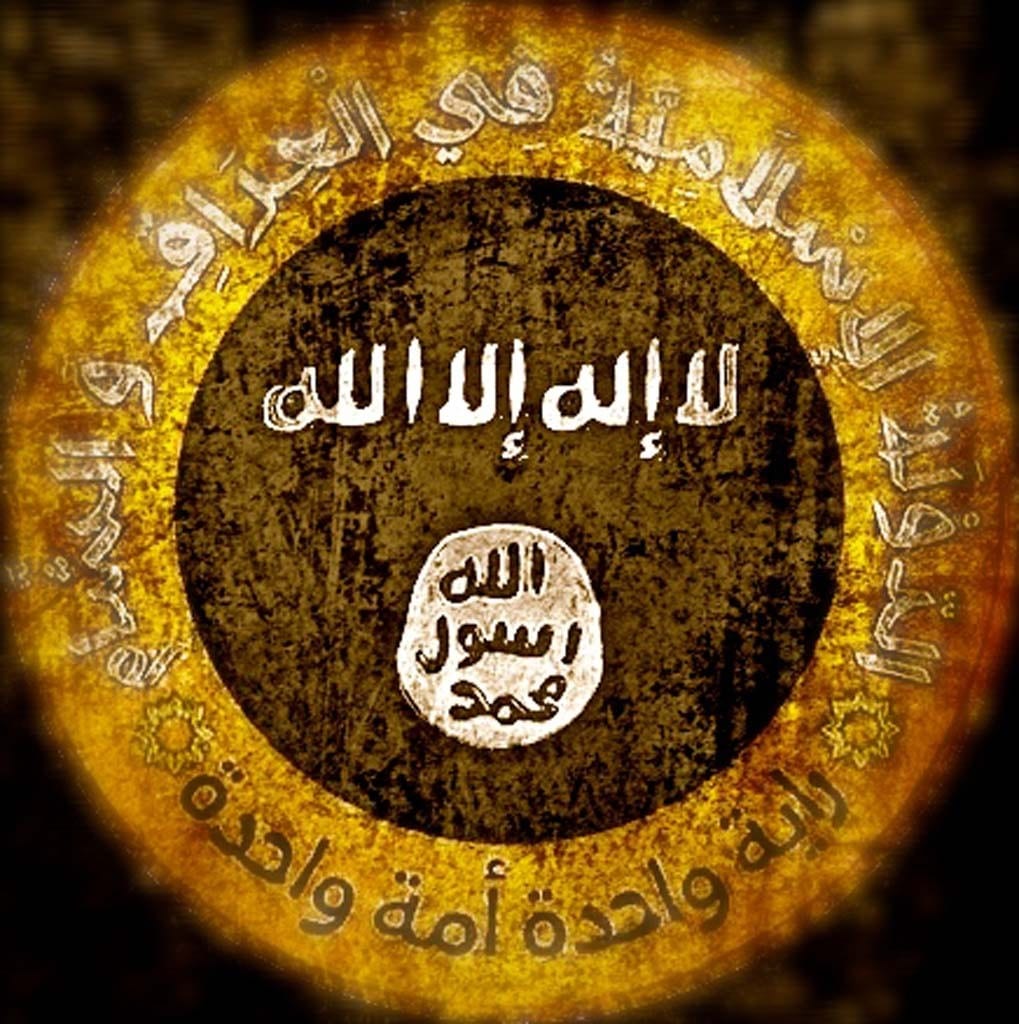
ISILationism, Part 1: America’s Sideline Strategy against the Islamic State and the “Strange Bedfellow” Alliance that Follows
As subtle, swift, and stark as a thief in the night, the Islamic State of Iraq and the Levant (ISIL) sprang from the ravaging badlands of Syria and inflicted a reign of terror far worse than its predecessor, Al-Qaida. A splinter-cell offshoot of Al-Qaida in Iraq (AQI) and the Al-Nusra front in Syria, ISIL forged greater numbers and strength (U.S.-aided munitions and equipment), and inevitably built up its own Caliphate of Islamic fundamentalism. ISIL intends on dominating the region of its claim by unreasonably violent means, subjecting its opponents to public executions, slavery, forced marriage, and many other abominable acts against humanity. A major adversary dismantling the prospects of a more steady and diplomatic Iraq, ISIL threatens neighboring countries and the entire international community, much like Al-Qaida, but through more contemporary methods of advertising as well (i.e. social media networks). The crisis at hand is not solely attributed to the outset of ISIL, but how exactly ISIL must be dealt with; in effect, ISIL may or may not have intended on the more unconventional battles to be waged by their enemies, but the current stratagem of the United States and Near Eastern states could unavoidably lead to triggers for multiple crises. Alliance strategies instituted by the U.S. have been key to preserving peace and stability through the security-trade nexus, but this political scheme allows for stark boundaries to be drawn between friend and foe, as the Cold War demonstrated. The lines between rival nations have blurred as the scope of ISIL’s looming dominance and influence in Iraq aggressively provokes those in religiopolitical hostility toward one another (i.e. Iran and Saudi Arabia) and those in sociopolitical opposition with one another (i.e. China, Russia, and the U.S.) to rethink their agendas in pursuit of a common enemy. The consequences of these inexorable decisions are left to be seen, but the resultant future will be that of a dauntingly transformative outcome.

Rising Challenges for Urban Refugees Under Thai Military Junta
Images of elephant rides through the jungle, bustling markets, and sipping a Singha on a white sand beach are often what come to mind for tourists in Thailand. However, a growing number of foreigners are arriving in the country due to persecution rather than pleasure. Last year, the number of asylum seekers in Bangkok quadrupled. The majority of new arrivals are Christians and Shiite or Ahmadiyya Muslims from Pakistan who have fled targeted religious and ethnic attacks. In addition, a growing number of Syrian and Palestinian war refugees are choosing Thailand as a first country of refuge. Bangkok’s burgeoning asylum seeker population combined with stricter regulations of undocumented persons under the military run government has created an increasingly dire situation for some of the world’s most vulnerable people.
Most urban asylum seekers arrive in Bangkok with a desire to gain official refugee status and then move on to a third country such as the U.S., Canada, or Australia. Thailand is a popular destination due to the relative ease of entering the country, the higher living standards compared with neighboring countries, and because it is home to the regional UN refugee agency headquarters. While life in Bangkok may be considered a safe haven compared to the country from which they have come, urban refugees are faced with a growing tide of challenges in a city that can be less than welcoming to those who do not bring wallets full of tourist dollars.
Many of those who flee to Bangkok do so with the perception that they will be able to achieve UN refugee status and move on to a third country of asylum within a relatively short period of time. However, due to recent UNHCR budget cuts and a growing backlog of applicants, it now takes years for many applicants to even get an interview and begin the refugee determination process. Those lucky enough to be deemed convention refugees must then go through a separate process to be accepted by a third country of asylum. It can take an additional several years to be recognized as a refugee by the migration office of a third country and even that does not guarantee resettlement. Asylum seekers are left in limbo waiting for slow moving bureaucracies to determine their future.
While the Royal Government of Thailand has made a bilateral agreement with Myanmar to allow Burmese refugees to live in camps along its border, it has not signed on to the 1951 Refugee Convention. There is no legal framework by the government to recognize refugees from any other country and considers asylum seekers illegal economic migrants. Following the expiration of their travel visas, they live in perpetual fear of being questioned, detained, or deported at the whim of a growing police presence under the new military government. Even if a person has gained refugee status, there is still the chance of being placed in Bangkok’s Immigration Detention Center. The IDC is an overcrowded prison where detainees have barely enough food to survive and receive little to no medical care. Families are often separated and held indefinitely until they are bailed out or assisted by UNHCR.
Following Thailand’s 19th coup d’état in the spring of last year, the military junta, or “The National Council for Peace and Order”, as it has deemed itself, has detained thousands, ramped up deportation of illegal migrant workers, and increased police presence on the streets of Bangkok. The Thai tourism ministry has used the slogan “The Land of Smiles” to promote its tourist industry. However, the military government’s “happiness campaign”, in which it provided Bangkokians free concerts, petting zoos, and opportunities to take selfies next to soldiers in riot gear, has done little to put smiles on the faces of the city’s growing refugee population. Fears of police raids in buildings housing refugees, deportation, and detention have increased as the junta has cracked down on those without proper documentation.
Public knowledge of refugees primarily revolves around the Burmese population who live in camps along the Thai-Myanmar border. Many Thai citizens are unaware of other populations seeking refuge in their country and the everyday challenges they face living in hiding in a foreign metropolis. Without proper documents, refugees find it extremely difficult to find employment, educate their children, obtain stable housing, and receive medical care from public hospitals. They are susceptible to manipulation and swindling by people who threaten to have them arrested. Worst case scenarios involve refugees getting caught up in sex trafficking and other illegal activities. With limited economic opportunities and a constant fear of being stopped by the police, they are heavily dependent upon humanitarian organizations for assistance.
Bangkok’s urban refugees receive a limited amount of aid from a handful of domestic and international NGOs. Jesuit Refugee Service, International Rescue Committee, Asylum Access, and the Thai Committee for Refugees, are the leading non-governmental actors providing protection, legal council, and community support. Such organizations also work to shine a light on the unique challenges faced by urban refugees which too often go under the radar of media outlets. By the end of 2015, UNHCR estimates that Bangkok’s refugee and asylum-seeking population will exceed 20,000.
The rapid growth of Bangkok’s refugee population in recent years is but one example of the global refugee urbanization phenomenon. In 2001, UNHCR reported that 13% of the world’s refugees lived in urban areas, whereas in recent years the number has leaped to over 50%. Urban refugee populations are composed of an increasing number of women, children, and seniors who are in greater need of protection and assistance. UNHCR’s Policy on Refugee Protection and Solutions in Urban Areas, published in 2009, was a step in the right direction for recognizing the unique challenges refugees face in metropolitan environments. However, the U.N. and other international organizations continue to focus a disproportionate amount of funding and protection efforts towards refugees living in designated rural camps. It is high time for the international humanitarian community to ramp up their efforts to provide greater assistance to displaced persons living in urban areas.
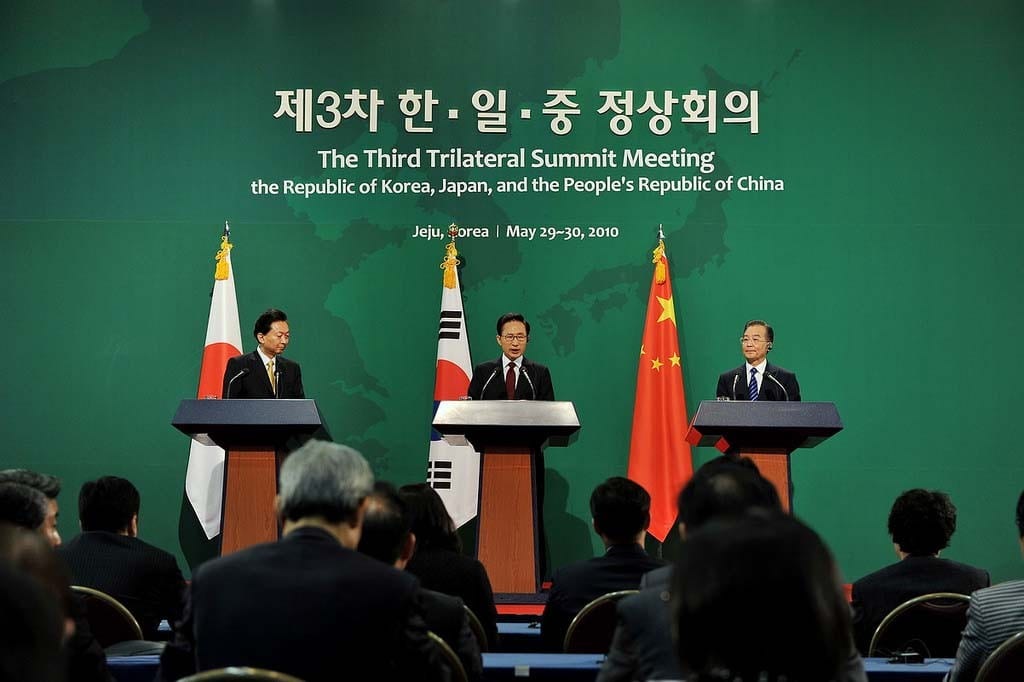
+3 — Regionalism in Northeast Asia: Integration vs. Cooperation
Northeast Asian Integration is a term often used recently among regionalists and/or European scholars to sell the prototypical European model as panacea for the prevailing conflicts in Northeast Asia. The European model, besides continuing debates over virtually everything, sure is a success in Europe. Embodied in this model is the prevailing notion that any European argument is better solved in a parliament in Brussels than in a trench in Verdun. It was not by chance that the European Union was awarded the Nobel Peace Prize in 2012 for advancing the causes of peace, reconciliation, democracy and human rights in Europe.
What proponents of a 1:1 application of the European model to Northeast Asia fail to see is the differing inherent geopolitical and historical exposition of Europe and Northeast Asia; it is not the cultural and linguistic similarities or differences among European or Northeast Asian nations that enabled union building here or inhibited it there. The omitted variable in the constructivist equation is the unilateral security architecture within Europe in form of NATO —provided by the United States— since the 1950s and lack thereof in basically all of East Asia. In Northeast Asia there was, instead, a political and ideological division with American backed, capitalist South Korea and Japan on one side and communist China and North Korea (with the Soviet Union projecting power in the region) on the other.
The Cold War saw a united front, with the U.S. defending Western Europe, which was extended eastwards after the collapse of the Soviet Union. In contrast, from a security perspective Northeast Asia is largely where it was since the end of the Korean War; a U.S. protected Japan and South Korea, Communist China and its protégé North Korea. Much has changed since 1953 indeed; the world has seen China’s immense growth since its reform and opening and a substantial Chinese assertiveness towards what it regards its sovereign territory in Hong Kong and Taiwan. In addition, Chinese – South Korean relations been normalized, North Korean – Chinese relations have deteriorated and despite unresolved conflicts over islands and Japanese war crimes, leaving aside North Korea, the region is engaging in trilateral trade of as much as 3.4 Trillion USD per year (source: TCS – trilateral statistics 2014). Unchanged, however, remains the security architecture of the region, where Chinese hegemonic ambitions and American containment clash, prompting Air Defense Identification Zones and pivots to Asia.
While the probability of open conflict between the involved parties is low and hopeful wishing for the redundancy of military alliances may arise, the situation for now still remains; as long as Northeast Asia is not united under one joint security alliance, a political union of states in the fashion of a European Union in this region is unlikely to occur. In other words; unless the United States ceases to project power in the Pacific and stop to being the number one security guarantor for South Korea and Japan, some sort of Shanghai Cooperation Organisation will not be able to replace it. In the unlikely event that Northeast Asia will establish or be integrated into a military alliance, it’s goal would be “to keep the Americans out, the Japanese in, and the Chinese down” (analog to NATO Secretary General Lord Ismay on the goals of NATO in Europe). In the Northeast Asian case this would be akin to the Chinese keeping themselves down in a military organization they would dominate.
A much more promising approach is to concentrate on the existing commons in Northeast Asia; trade and economic cooperation. Peeking at Southeast Asia, the Association of Southeast Asian Nations (ASEAN) represents an auspicious alternative to the European model; while ASEAN is built on a Political-Security (APSC), Economic (AEC) and Socio Cultural (ASCC) Community, the economic dimension is so far the best pronounced. With an established common market internally and FTA agreements with China, Korea, Japan (ASEAN +3) as well as Australia, New Zealand and India and negotiations taking place with the EU, ASEAN is widely perceived as economic entity. As for its foreign affairs, the ASEAN Way based on the principles of non-interference, informality, minimal institutionalism, consultation and consensus, non-use of force and non-confrontation, can be described as regional multilateralism.
In the future ASEAN is bound to grow bigger economically and closer politically and culturally; an ASEAN identity is being promoted and a monetary union is being discussed. ASEAN leaders seem to push things less than their European colleagues, leaving South East Asia time and space to develop based on the economic and political situation at hand and not following wishful, idealistic chimeras of overambitious bureaucrats. The Trilateral Cooperation Secretariat (TCS) situated in Seoul is doing just that; made up of “the Three” in ASEAN +3; The People’s Republic of China, South Korea and Japan, the TCS is, compared to ASEAN and EU, a low profile international organization that facilitates summits between the three countries’ foreign and other ministers and runs several projects to promote peace and prosperity among its members.
Considering the above one may conclude that Northeast Asia is in fact on the right way; instead of trying to integrate the region into one political union lacking the institutional unity necessary, Northeast Asia should continue to concentrate on economic tri- and multilateral cooperation; to the extent that all agents: institutions, enterprises and individuals become highly interconnected and the possibility of conflict becomes too dangerous, too dreadful and too detrimental to ever be considered.
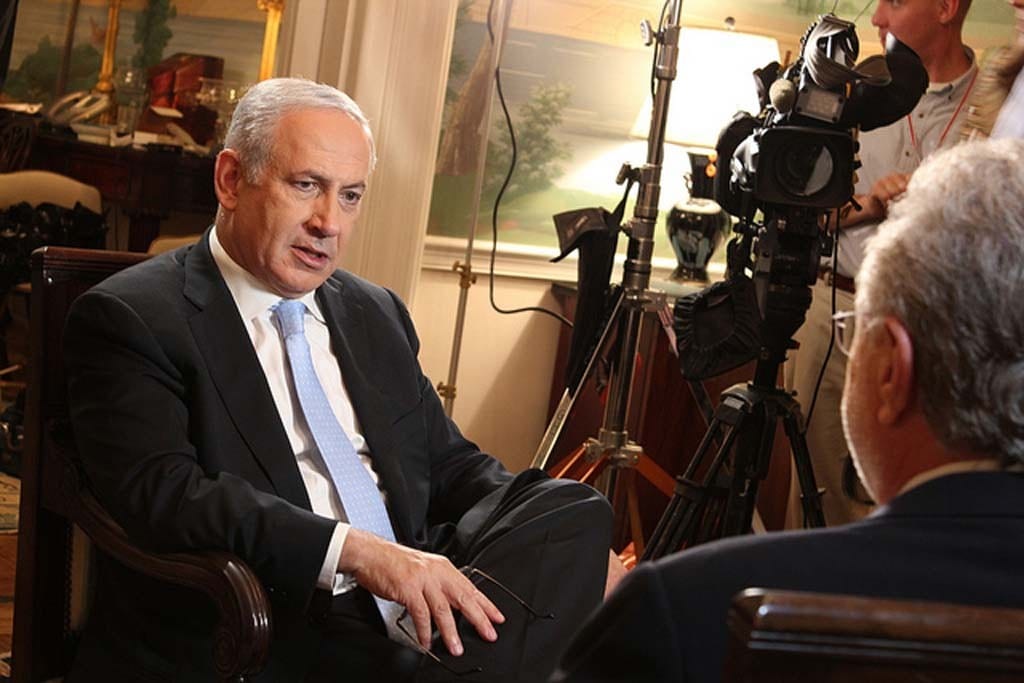
US-Israeli Tension Increases With Kerry’s Remarks
The behind the scenes moves of the players involved in the high-stakes US-Iran negotiations on Iran’s nuclear program are continuing to fester out into the open. It appears that the Obama administration is increasingly loosing patience with Netanyahu’s meddling. Illustrative of this, tension between US Secretary of State John Kerry and Israeli Prime Minister Benjamin Netanyahu reached a new height on Wednesday. Speaking to the US Congress in the run-up to Netanyahu’s planned congressional visit in March, Kerry reminded US officials that the last time Netanyahu spoke before the Congress back in 2002 he was giving his strong support for a US invasion of Iraq. To observers aware of the increasing conflict between the administration and Netanyahu, the implication of Kerry’s statement should be clear, “He cannot be trusted”.
Behind closed doors is a continued sense of anger and tension between US President Obama and the Israeli leader. Only weeks ago, the Israeli newspaper Haaretz reported that Obama had called and demanded that Netanyahu stop interfering with US lawmakers. Netanyahu is reported to be personally lobbying US senators and congressman for increased sanctions on Iran, an action that would effectively abort any progress on negotiations between the White House and Tehran. Thus, Kerry’s public remarks seem to be expressing in a much softer tone what the White House truly feels towards Netanyahu’s continued interference. Notably, and perhaps showing the personal nature that has come to define the Obama-Netanyahu relationship, these are some of the most recent open attempts to thwart Netanyahu’s attempts to influence US politicians. Remember, it wasn’t long ago an anonymous US official summarized the administration’s feelings with “Netanyahu spat in our face. There will be a price”. Observers should expect a continued increase in public statements in the lead up to Netanyahu’s visit, with Kerry and other unnamed officials likely making increasingly candid statements.
For those still questioning why Netanyahu would continue to threaten bilateral ties and destroy what little goodwill existed between himself and the Obama administration, consider the earlier speech to which Kerry was referencing. It can be clearly observed that his advice has turned out to be disastrous for the US. In the September 12, 2002 remarks, Netanyahu said the decision to invade Iraq was a “good choice, the right choice” and guaranteed “enormous positive reverberations on [sic] the region”. With Iraq in shambles and IS risen from the simmering ashes, Netanyahu’s earlier statements and his belief that the only way to deal with terroristic regimes was “to apply military force” should call into question his ability to guide the US towards correct actions in the region. None of this matters to Netanyahu however, as he believes his advice is the only way to face his believed existential threat from Iran.
This does not mean that Netanyahu’s advice to invade Iraq or to resort to military actions in dealing with the Iranian regime is wholly incorrect. This depends by which country you measure the benefits from following Netanyahu’s advice. When considering his final remarks to Congress back in 2002 it is his last statement that is the most telling. Speaking emphatically, Netanyahu proclaimed “If I had to say the three principles of winning the war on terror…the three principles of winning the war on terror are the three W’s, winning, winning, [and] winning.” The US and the Middle East is certainly not winning anything by following Netanyahu’s hawkish advice, Americans would do well to consider who is.

US Central American Foreign Policy: Foreign Aid, Immigration Policy, Geopolitics or None of the Above
In an op-ed piece in the New York Times on February 9th, Vice-President Joe Biden outlined the White House’s argument for the US Congress to pass a billion dollar aid package to El Salvador, Guatemala and Honduras as part of the proposed budget for 2016. Without the realistic prospect of a larger immigration reform being passed in Congress, this push for foreign aid falls into the White House’s piecemeal approach to immigration reform. Up to now President Obama has used executive orders to push his immigration agenda, most notably an order that called for minors brought to the country before 2010 to not be targeted for deportation. However, unlike an executive order, the plan for foreign aid to Central America requires Republican support in Congress. So far, lawmakers are not discussing the proposed aid and what it would mean for immigration or foreign policy in the press.
The plan outlined by Biden aims to support reforms to the security, education, tax, foreign investment and judicial systems in the three small, but long-suffering nations. By improving the economic, security and political situations in these countries, the White House hopes to limit further border crossings. In particular, they hope to avoid future crises similar to last summer when tens of thousands of mainly Central American minors crossed the US-Mexico border. As part of a multi-pronged approach to immigration policy, including more border patrol, the White House wants to use foreign aid to stop immigration at the source. In response to Biden’s arguments, on February 9th, the New York Times editorial board supported the “merits of the White House’s long-term approach.” They also spoke to the goal of increasing US influence in its own backyard. China is becoming ever more involved in Latin America not only as a consumer of its raw materials, but also as an investor in infrastructure, for example the proposed canal in Nicaragua, in addition to serving as a creditor to leftist-leaning nations such as Venezuela, Ecuador and Argentina.
While the Times may applaud the long-term planning, this proposed aid is clearly a reaction to the immigration crisis last summer, albeit a welcome one. The causes of the systemic problems facing the three nations are multifaceted, but did not surface last summer. Corruption, weak institutions, instability, civil wars, coups, and crimes against humanity defined the Central American 20th century. These nations no longer suffer open military conflict, but drug trafficking and gang related murders put all three of these countries in the top ten in homicide rates worldwide.
In the op-ed Biden states that the US will provide assistance because Central American governments “took ownership of the problem.” While all governments should take responsibility for their failings, Mr. Biden’s statement is an attempt to deflect the US’ historic relationship with and responsibility to the region. From the Monroe Doctrine, the banana republics, and the Cold War to the War on Drugs, US influence has dominated politics in these three nations. It is shameful that it took a humanitarian crisis for the US to finally propose supporting real reform in the region. However, the plan laid out by Biden is a step in the right direction and a hopeful sign that the US will take a more proactive approach to improving the political and economic situation in its backyard. The need to have secure borders is clear to all, but only by improving the situation in potential émigrés home nations can the US hope to truly solve the immigration issue. Be it to stem immigration, aid needy neighbors or increase influence in the region, the US government needs to decide if it wants to be proactive in a region that it has traditionally treated as an afterthought. If not, the US will just be reacting to the next crisis.